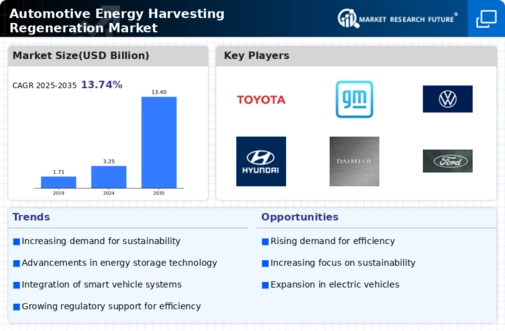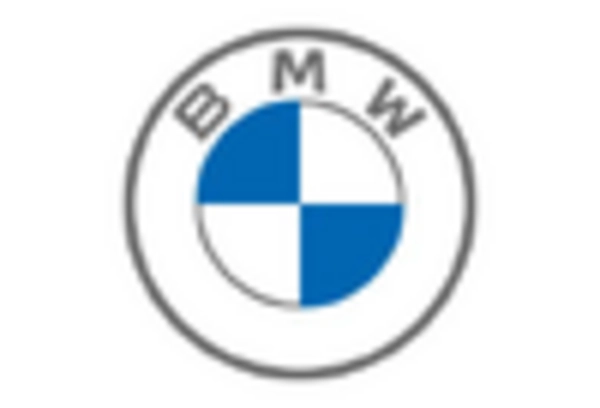Regulatory Frameworks and Standards
The Automotive Energy Harvesting Regeneration Market is increasingly influenced by stringent regulatory frameworks aimed at reducing carbon footprints. Governments are implementing policies that encourage the adoption of energy-efficient technologies in vehicles. For instance, regulations mandating lower emissions and higher fuel efficiency are pushing manufacturers to explore energy harvesting solutions. The market is expected to respond positively, as compliance with these regulations often necessitates investment in innovative technologies. This regulatory pressure is likely to drive growth in the Automotive Energy Harvesting Regeneration Market, as companies seek to meet both legal requirements and consumer expectations for sustainability.
Rising Fuel Prices and Economic Factors
The Automotive Energy Harvesting Regeneration Market is also shaped by rising fuel prices, which compel consumers and manufacturers to seek alternative energy solutions. As fuel costs escalate, the demand for energy-efficient vehicles increases, prompting manufacturers to invest in energy harvesting technologies. This trend is evident in the automotive sector, where the integration of regenerative braking systems and other energy recovery methods is becoming more prevalent. Economic factors, including fluctuating oil prices, are likely to further stimulate interest in the Automotive Energy Harvesting Regeneration Market, as stakeholders aim to mitigate operational costs through enhanced energy efficiency.
Technological Innovations in Energy Harvesting
The Automotive Energy Harvesting Regeneration Market is witnessing a surge in technological innovations that enhance energy efficiency. Advanced materials, such as piezoelectric and thermoelectric systems, are being integrated into vehicles to capture energy from vibrations and heat. This integration not only improves fuel efficiency but also reduces emissions, aligning with environmental standards. The market for energy harvesting technologies is projected to grow significantly, with estimates suggesting a compound annual growth rate of over 20% in the coming years. As manufacturers adopt these technologies, the Automotive Energy Harvesting Regeneration Market is likely to expand, driven by the need for more sustainable automotive solutions.
Consumer Awareness and Demand for Sustainability
The Automotive Energy Harvesting Regeneration Market is experiencing heightened consumer awareness regarding sustainability. As individuals become more environmentally conscious, there is a growing demand for vehicles that utilize energy harvesting technologies. Consumers are increasingly seeking vehicles that not only provide performance but also contribute to reducing environmental impact. This shift in consumer preferences is prompting manufacturers to innovate and incorporate energy regeneration systems into their designs. The Automotive Energy Harvesting Regeneration Market is likely to benefit from this trend, as companies strive to meet the evolving expectations of eco-conscious consumers.
Collaboration and Partnerships in Research and Development
The Automotive Energy Harvesting Regeneration Market is witnessing a trend of collaboration among automotive manufacturers, technology firms, and research institutions. These partnerships are essential for advancing the development of energy harvesting technologies. By pooling resources and expertise, stakeholders can accelerate innovation and bring new solutions to market more efficiently. Collaborative efforts are likely to focus on enhancing the efficiency of energy recovery systems and integrating them into existing vehicle platforms. This trend of collaboration is expected to drive growth in the Automotive Energy Harvesting Regeneration Market, as it fosters a more dynamic and responsive approach to technological advancements.

















Leave a Comment